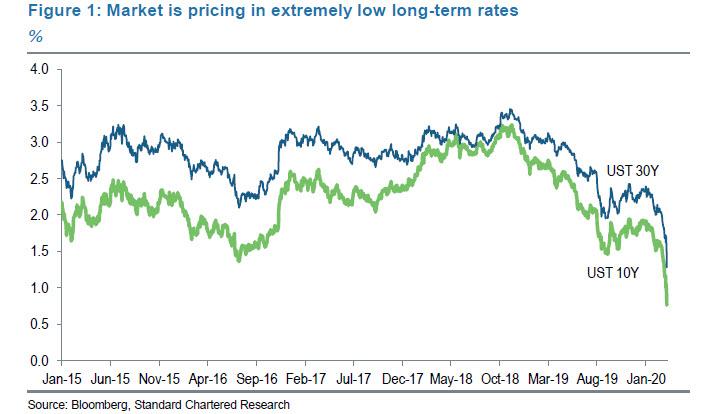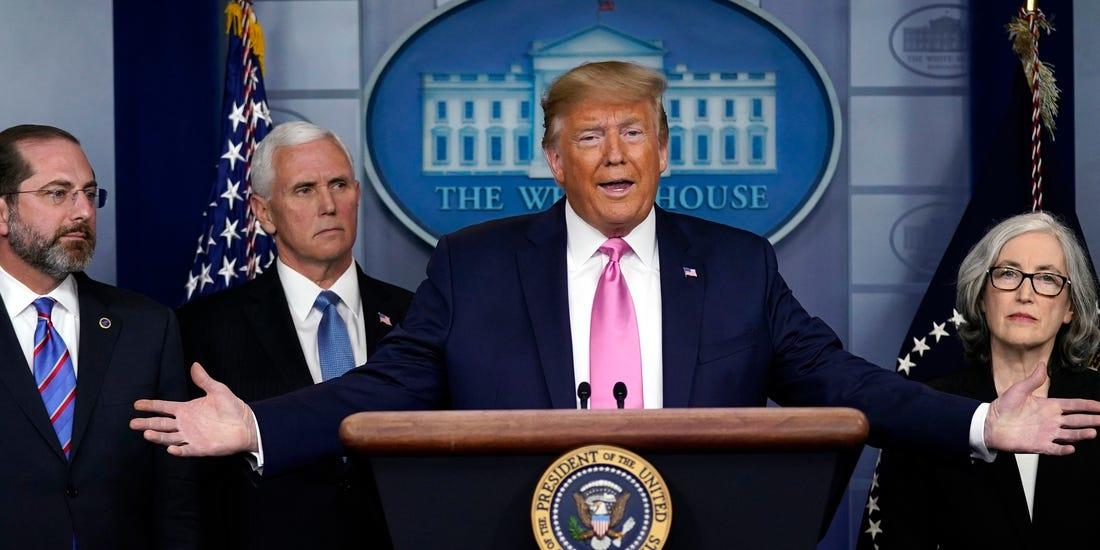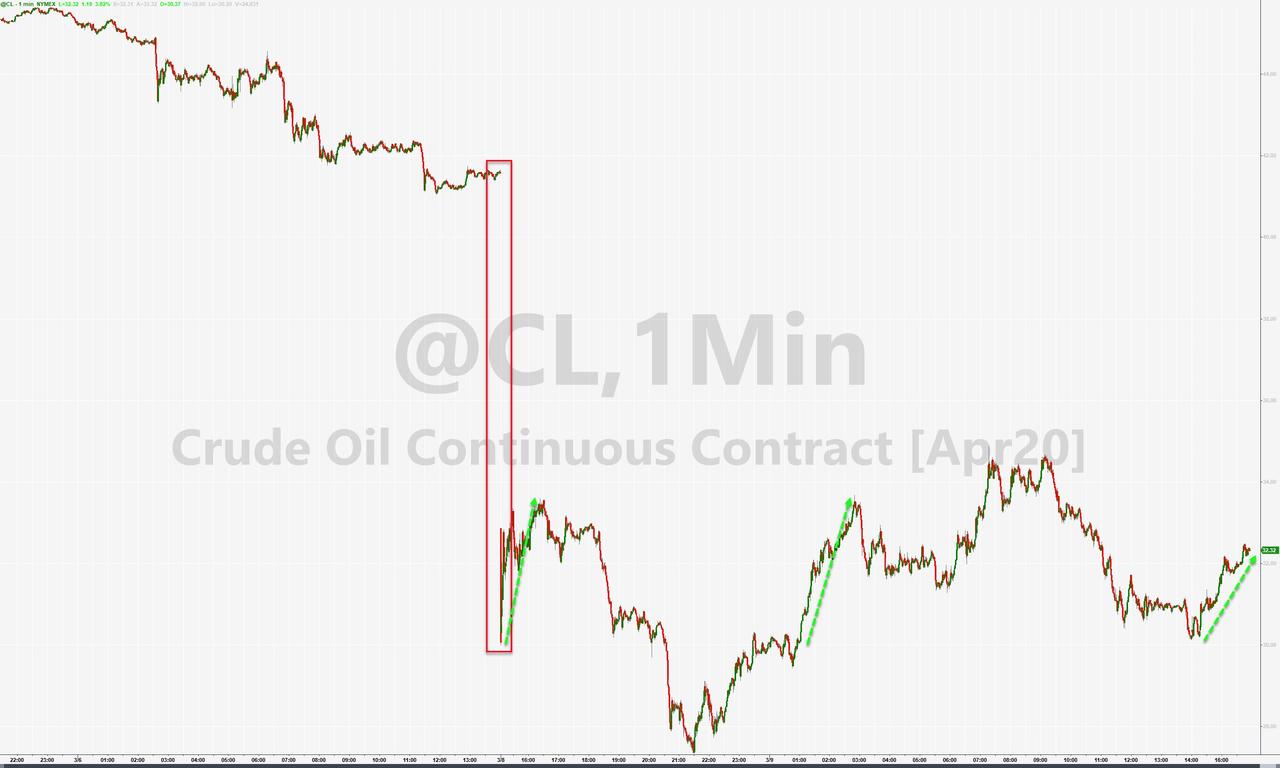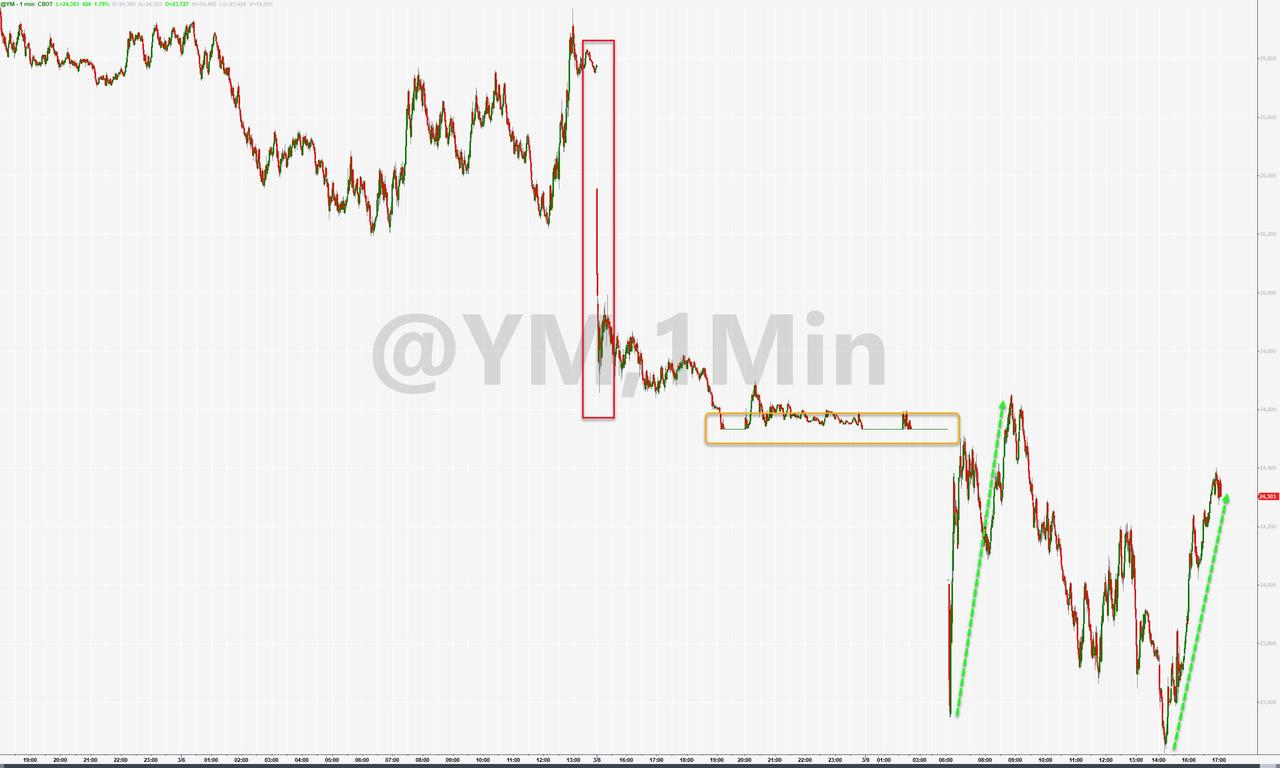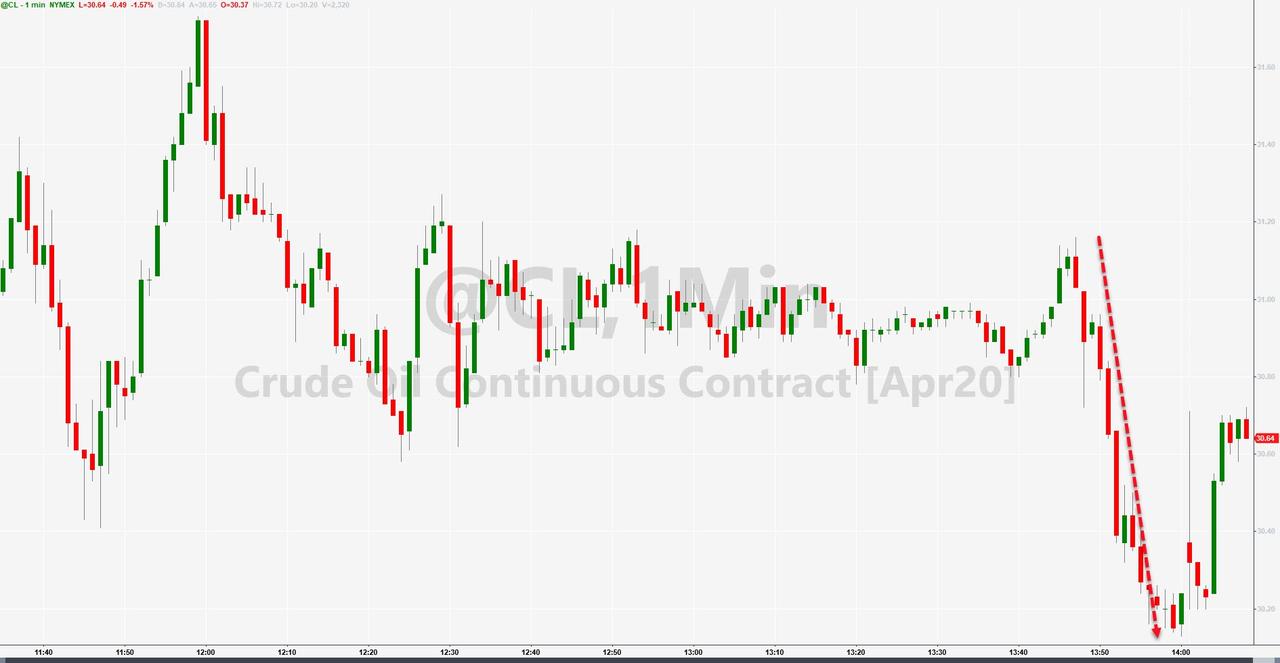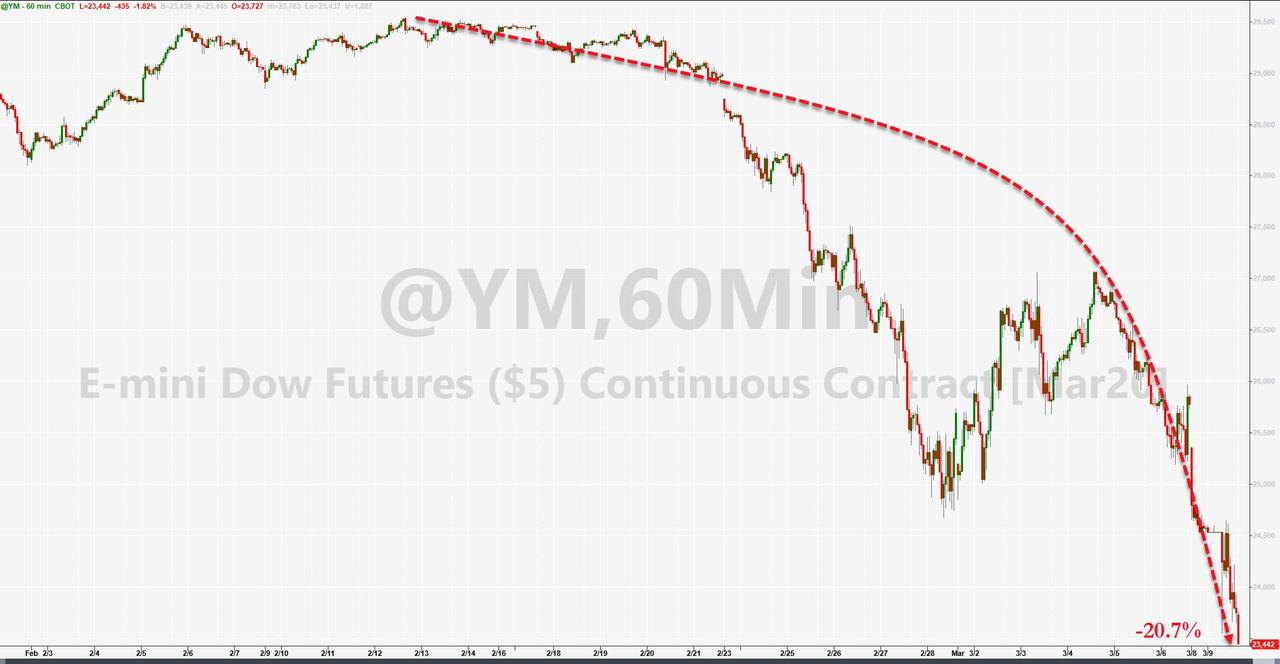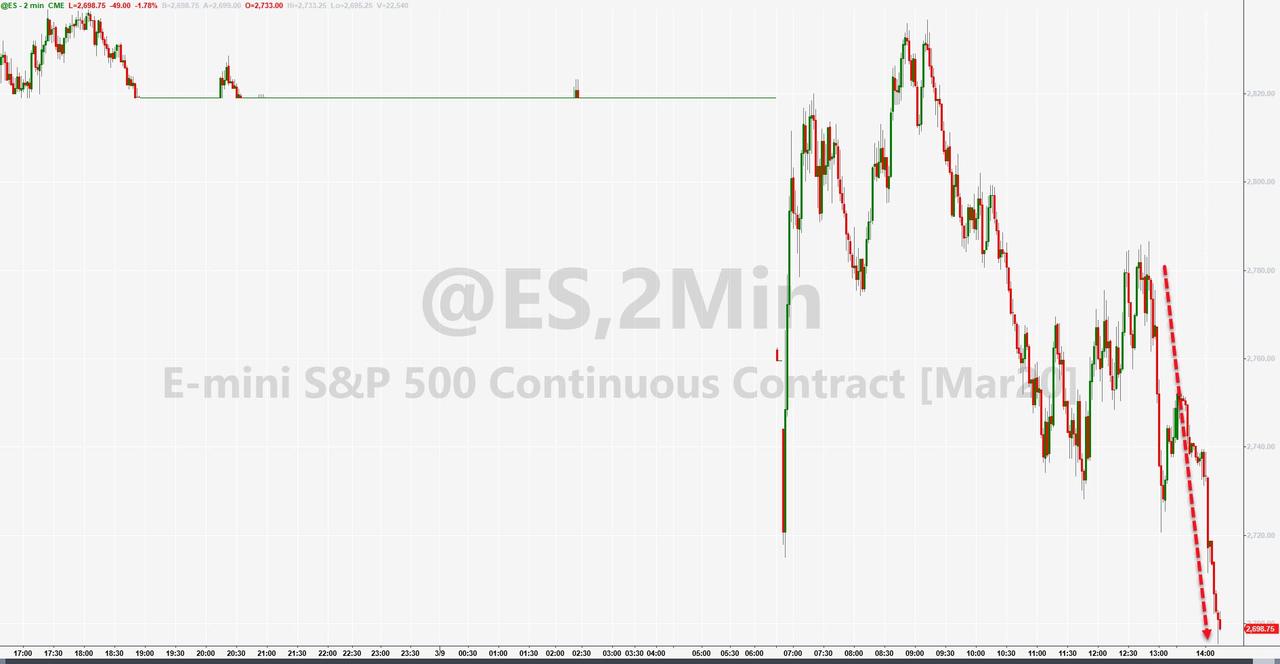Standard Chartered: Only A Combination Of Low Rates And Fiscal Stimulus Has A Chance Of Working
With investor expectations for an imminent rate cut to 0% (or lower) running high, only surpassed by expectations for an imminent – and “very, very substantial” fiscal stimulus – Standard Chartered’s head of FX strategy Steve Englander has an unorthodox take: neither may be sufficient.
As Englander writes in a note titled “Emptying the monetary policy cupboard?”, while the Fed may think that aggressively reducing policy rates is a prerequisite to fiscal policy, investors are sceptical that monetary policy is effective (and perhaps so is the Fed). But since “the FOMC may feel that fiscal stimulus is practical politically only if monetary policy is maxed out”, the combination of low rates and fiscal stimulus may be the key to enabling borrowers to meet obligations, according to the FX strategist.
In terms of monetary expectations, Englander does not see the Fed doing anything too crazy, and expects the Fed to ease 25bps at its March and April meetings Fed easing likely in March and April, but as he admits, “recent Fed comments and asset market selling have led to markets pricing in just under 60bps for the March meeting.” Indeed, markets now price in end-April fed funds rates below 40bps. However, the problem is that per discussions with clients there is “little confidence that easier money will lead to a rapid economic rebound; many feel that that the recent 50bps move may have been ‘wasted’.“
As such, and given economic and credit market concerns, fiscal policy will likely be more effective than monetary policy, according to Englander. To be sure, Fed officials have argued that lower rates will lead to mortgage refinancing, among other activity spurs. But the counterargument to more monetary easing (absent Quaranatative Easing of course) is that neither consumer durables spending nor plant and equipment investment will likely be much affected by lower interest rates when uncertainty is so elevated.
Here’s the problem: as the Std Chartered strategist admits, “Fiscal stimulus may not be significantly effective, either, in generating additional spending. A tax cut that increases disposable income or business cash flow might not increase spending. However, it may enable businesses and households to avoid a major credit crunch, when payments are due but the expected revenues are not there.”
The impact of fiscal stimulus via lower taxes may be less in generating additional spending than in substituting federal government credit, which is looking pretty good, for private-sector credit, where market concerns are beginning to emerge.
And while this would not be a free lunch, but might be the cheapest eats out there as the objective of fiscal easing would be to keep households and businesses solvent so that supply and demand can bounce back quickly once the coronavirus abates.
There is another consideration when expecting a major fiscal stimulus: the US elections and the lack of cooperation between Republicans and Democrats complicate reaching agreement on fiscal matters. As we saw in 2008, there can be cooperation even in an election year, when the political costs of not cooperating are sufficiently high. However, other policy options have to be exhausted.
These considerations make a rapid response essential according to Englander, who cautions that the cost of repairing private-sector solvency, once impaired, is much greater than maintaining solvency by acting quickly. While the Fed has discussed fiscal policy in general terms, but has not come out squarely in its favor. However, in recent days we see signals of more urgency than we or the market expected in comments by Fed officials. As such, Friday’s comments by Boston Fed President Rosengren on the possibility of the Fed buying assets other than Treasuries can be seen in a similar light (although it is not clear if the Fed would just buy stocks or also barrels of oil after Monday’s record plunge).In any case, by narrowing the spread with already low-yielding US Treasuries, such purchases would directly reduce debt-servicing burdens.
Meanwhile, confirming the open-ended nature of the upcoming stimulus, St Louis Fed President James Bullard has made several television appearance in recent days with the message: “”Everything is on the table, we’re willing to do more,” and “We can meet at any time and move at any time in this situation” as he appeared to de-emphasise the March meeting, “I just don’t want people to focus so heavily on that particular day because the FOMC has already shown, Jay Powell has already shown, we can move between meetings.” And while Bullard says that the Fed could ease either before or after the March meeting, neither Englander nor others see “much to be gained by the Fed encouraging market speculation that the Fed would disappoint.”
Putting this together, the logic is to clear the table of monetary policy so that the focus can shift to fiscal policy – which is likely to be more effective. Any fiscal measures are likely to involve some government spending in order to help steady employment. If this analysis is correct, measures will include a heavy dose of temporary tax reductions to improve cash flow and enable private-sector firms and households to stay current on debt servicing. Meanwhile, “the Fed’s contribution would be to enable the government to increase its debt burden on as favourable terms as possible.”
Tyler Durden
Mon, 03/09/2020 – 20:45
via ZeroHedge News https://ift.tt/3aGuv6L Tyler Durden
